The South Korean shipbuilding industry has shown off a range of models of the country’s planned first aircraft carrier, now known as CVX, which is intended to operate F-35B stealth fighters. While a previous plan, referred to as LPX-II, suggested the South Korean Navy was eying a revised amphibious assault ship design better suited to carry those short takeoff and vertical landing-capable jets, the revised CVX project is an altogether more ambitious aircraft carrier. Among the latest proposals are a vessel with a new ‘ski jump’ takeoff ramp, as well as twin island superstructures.
The models in question are on display at the International Maritime Defense Industry Exhibition 2021 (MADEX 2021) that’s taking place in Busan, South Korea. One of these is from Hyundai Heavy Industries (HHI), which received a contract for conceptual design study in late 2019 and it is a twin island design akin to that of U.K. Royal Navy’s Queen Elizabeth class.
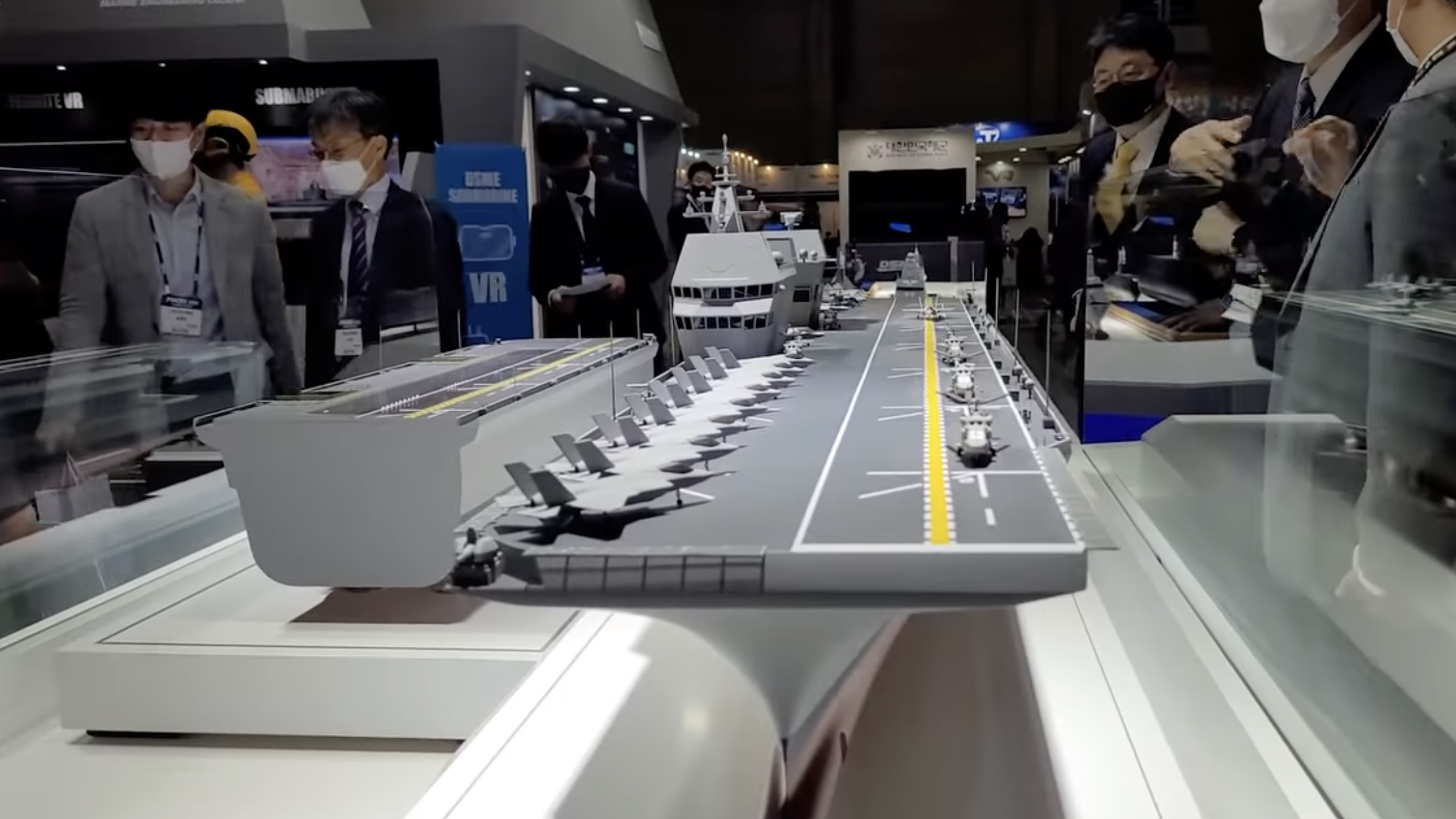
The new HHI proposal also has a ‘ski jump’ takeoff ramp over the bow for STOVL operations. The company has also been pitching a bow ramp on its carrier for some years now, but this new model clearly represents a significantly evolved design. HHI says its carrier design would be 850 feet long, have a 200-foot-wide beam, and have a fully loaded displacement of around 45,000 tons. By comparison, the Queen Elizabeth class is 920 feet long, has a beam of 240 feet, and a displacement of 65,000 tons.
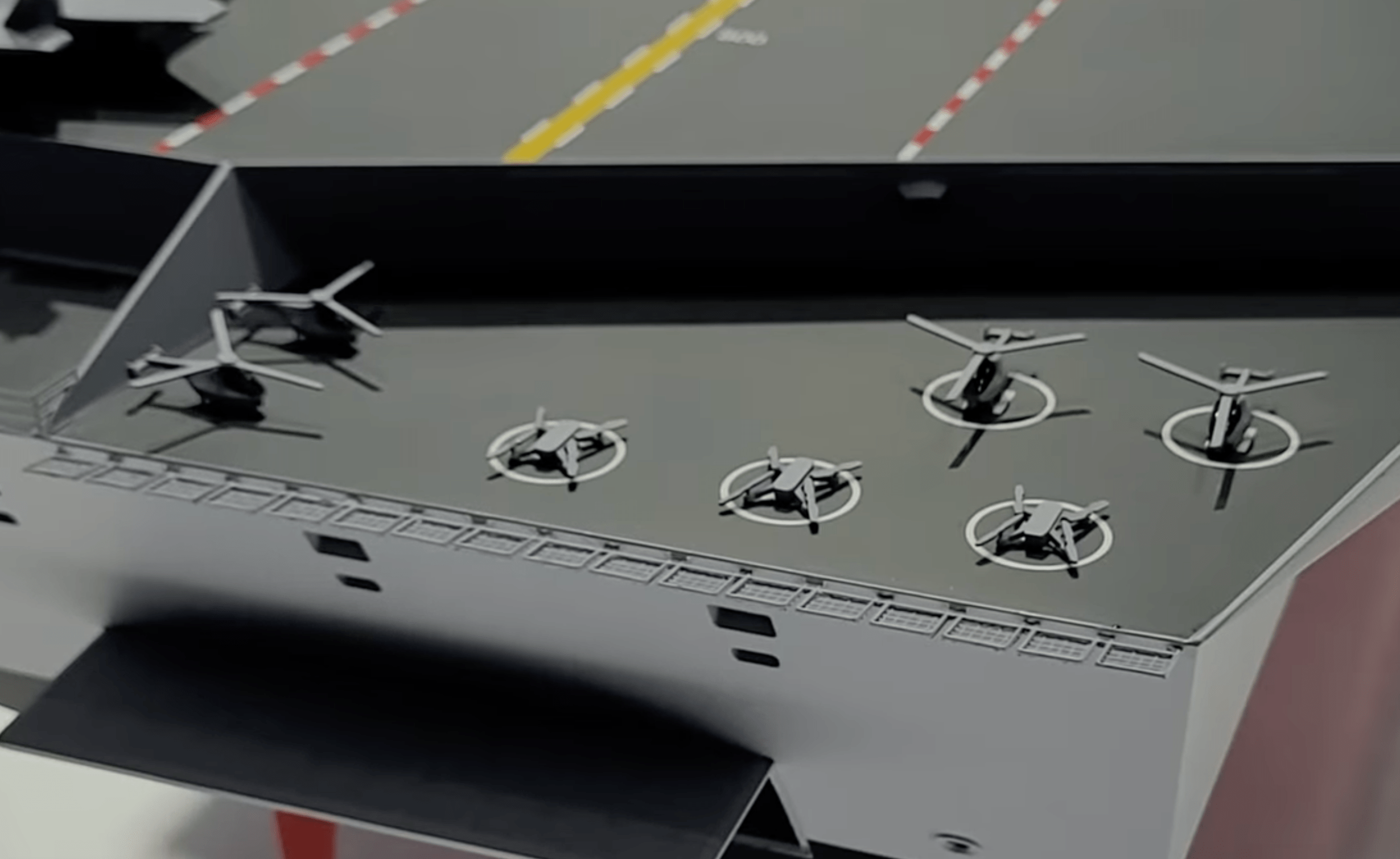
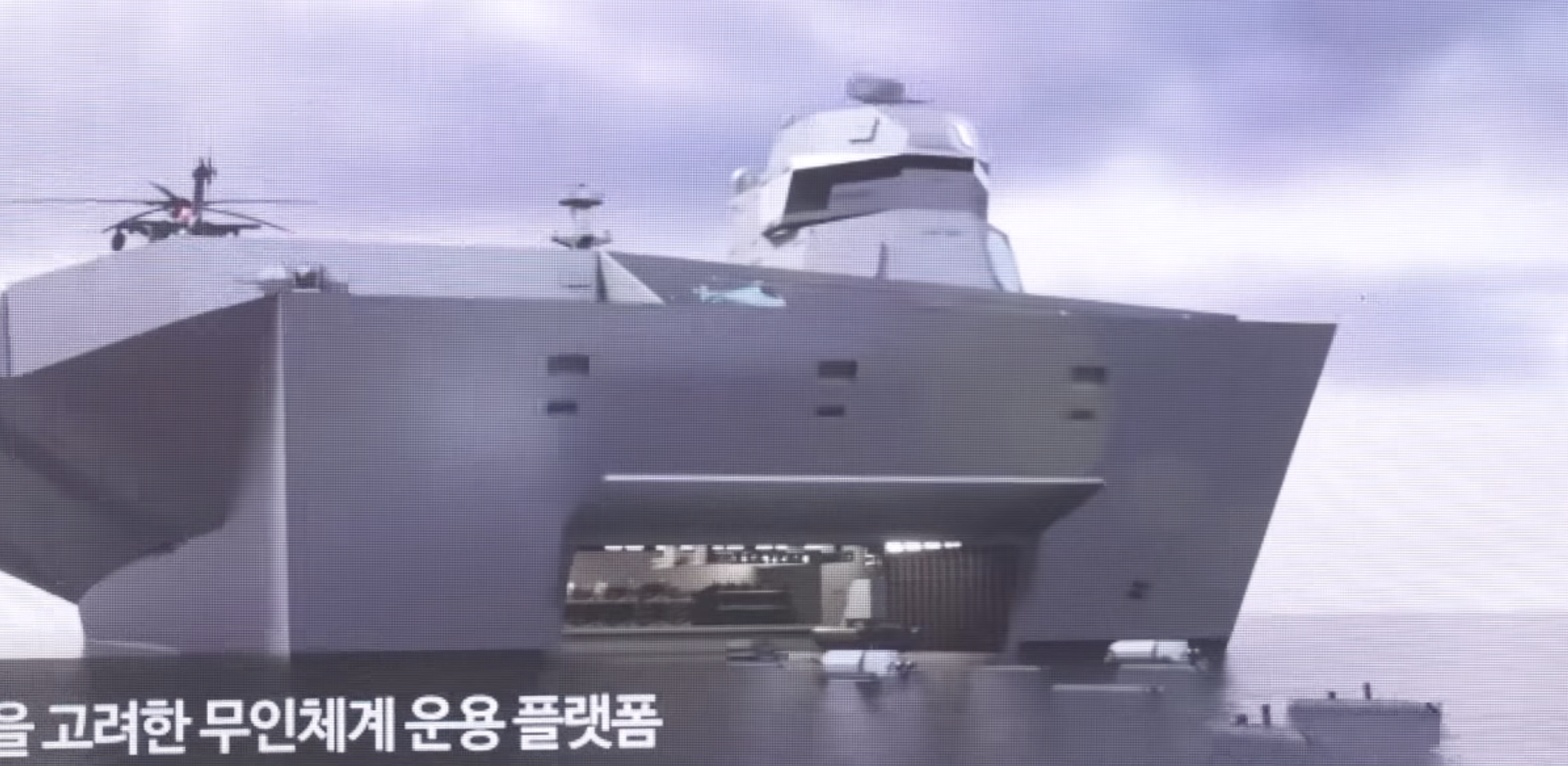
The Hyundai model is displayed with F-35Bs, AH-1Z Cobra attack helicopters, of which a potential transfer to Korea has been approved, plus H-60 series helicopters arranged on deck, as well as what looks like a Leonardo Merlin helicopter, a type not currently used by South Korea. Hyundai says that it will be able to operate up to around 20 F-35Bs.
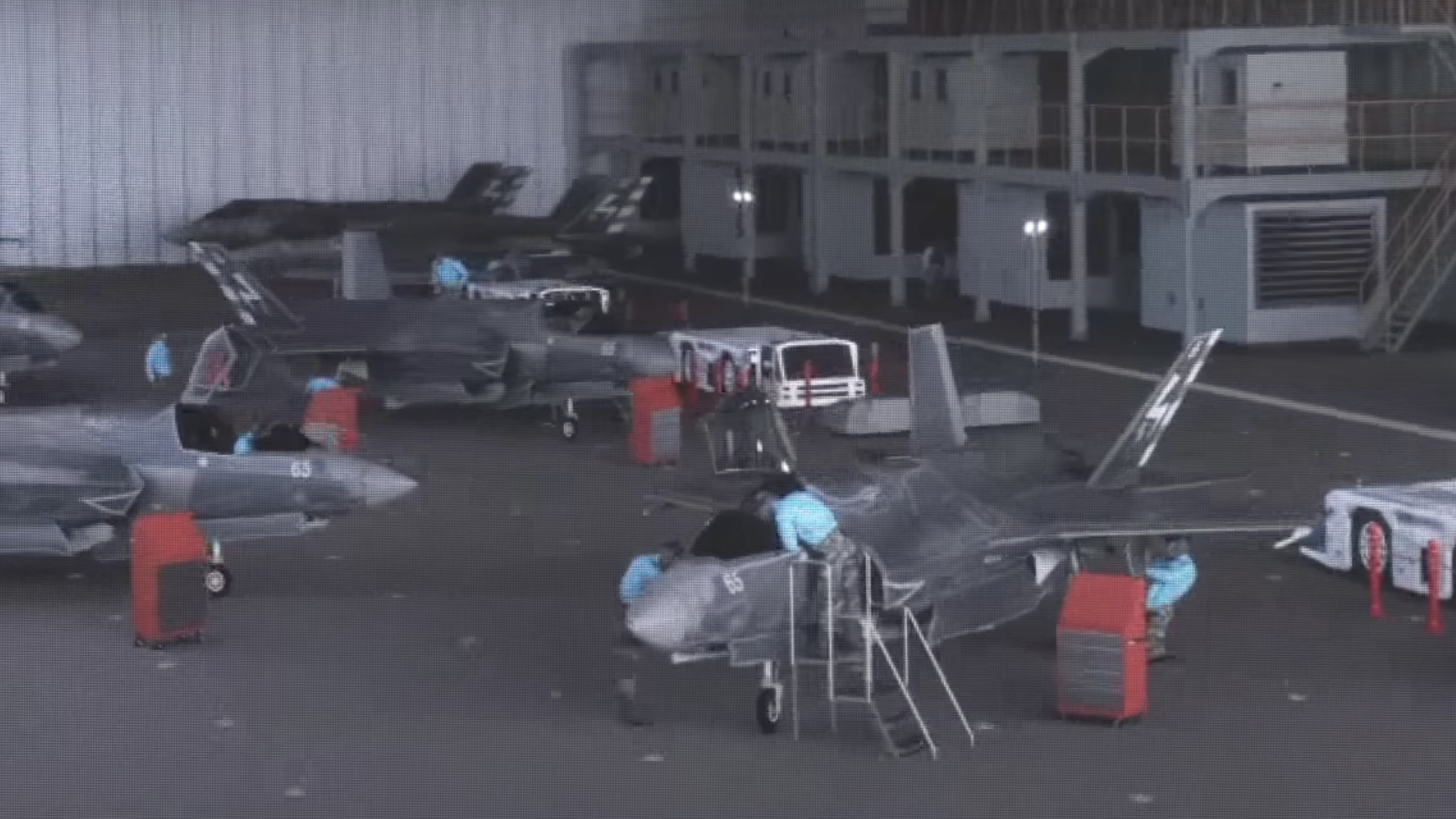
There’s also an auxiliary deck area at the very rear of the ship for operating small rotary-wing drones and an adapted well deck from which to deploy unmanned surface vehicles (USVs) and unmanned underwater vehicles (UUVs).
The Hyundai carrier design has two elevators, one on each side, including one between the islands, to move aircraft between the flight deck and the hangar.
However, the Hyundai design is not the only South Korean carrier proposal on show at MADEX. The South Korean Navy, formally known as the Republic of Korea Navy (ROKN), itself displayed a model at MADEX, with much in common with the DSME proposal
Meanwhile, a rival design from Daewoo Shipbuilding & Marine Engineering (DSME) is on display that also utilizes a twin-island arrangement, but lacks the ‘ski jump,’ instead having a flight deck that has more in common with U.S. Navy amphibious assault ships.
The vessel would be 860 feet long, 150 feet wide, and would have a displacement of around 45,000 tons, according to that company. DSME also says its carrier would be able to embark 16 F-35Bs and six medium helicopters simultaneously, with hangar space for 12 of the jet fighters. It has two elevators on the starboard side to move those aircraft between decks.
In the course of MADEX, DSME signed a memorandum of understanding with Italian shipbuilder Fincantieri, which would provide the Korean firm with technological expertise derived from its own Trieste class design, a landing helicopter dock with F-35B capability that’s now being built for the Italian Navy and which also features twin islands.
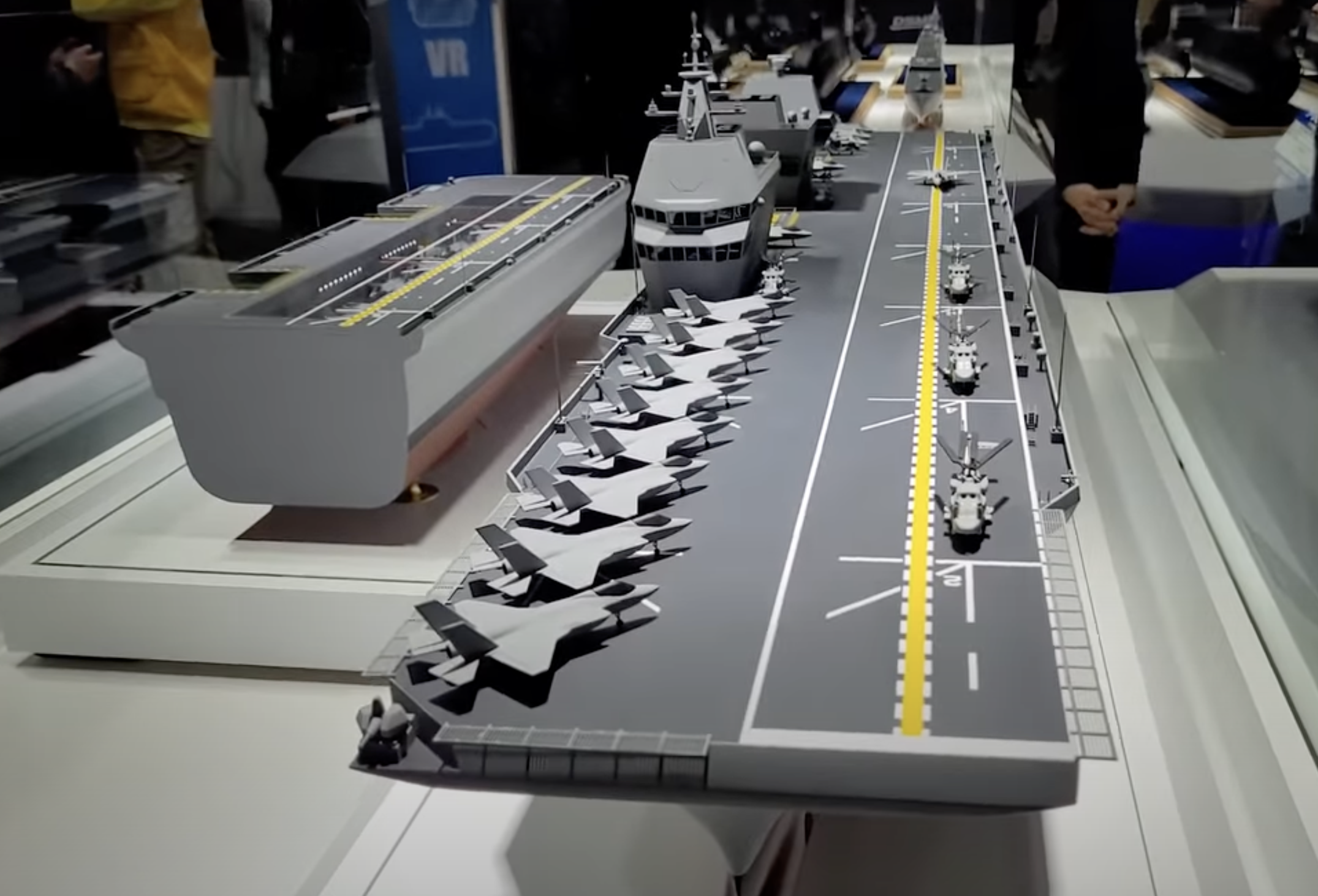
The DSME vessel is closer in concept to the kinds of ‘evolved amphibious assault ship’ designs that had been expected, including older LPX-II concept art. Nevertheless, it still represents a considerably larger and more capable ship than the South Korean Navy’s current Dokdo class landing platform helicopter (LPH), which is 652 feet long, 101 feet wide, and has a displacement of only 19,500 tons.
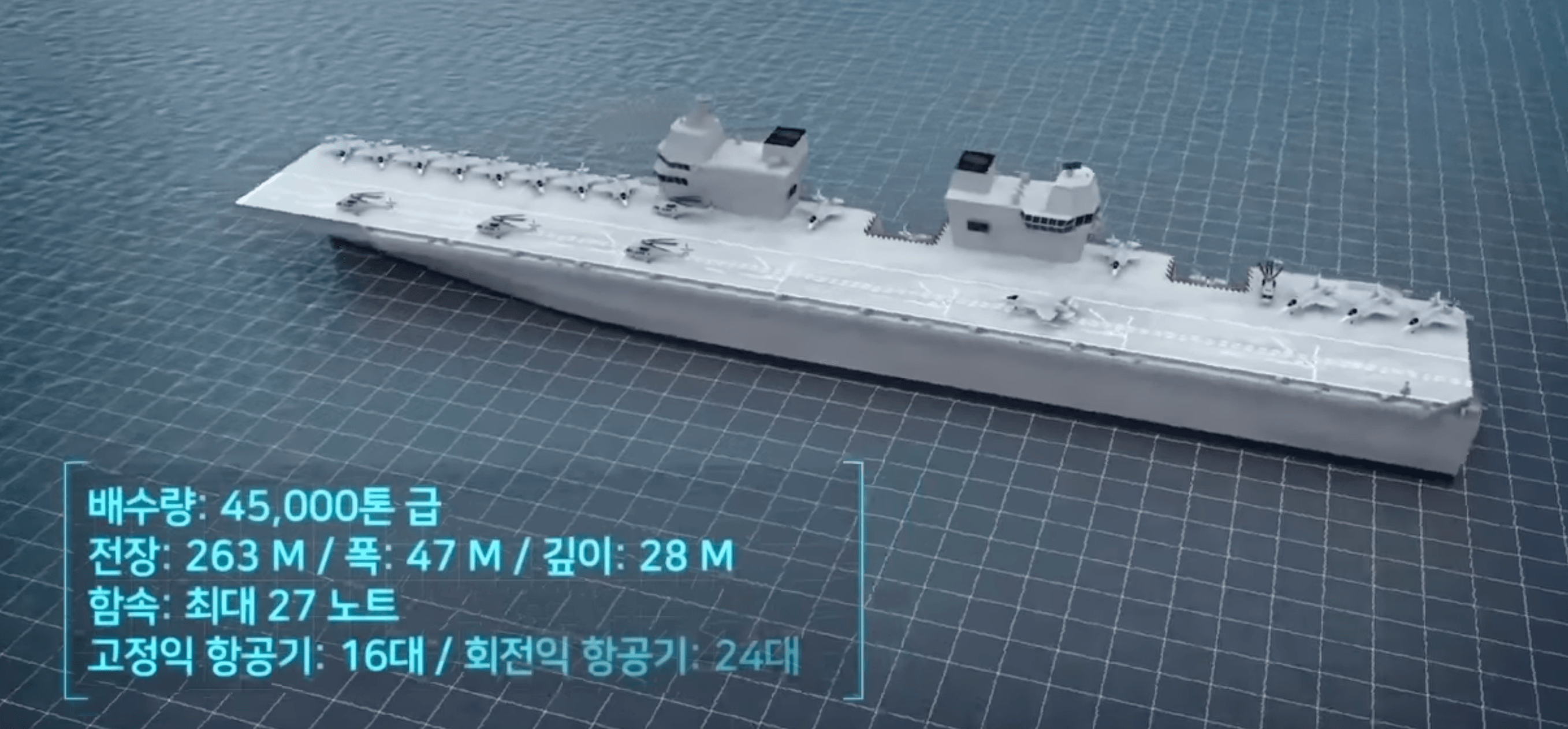
In the past, it’s been reported that the CVX, whichever design is chosen, will be equipped with an active electronically scanned array (AESA) radar of the same type that will be used in the new KDDX destroyer. It is expected to be protected by Haegung (K-SAAM) surface-to-air missiles and close-in weapons systems (CIWS). The latter is expected to be an indigenous design developed under the CIWS-II program.
There’s also evidence that Seoul is mulling another possible carrier design at the other end of the scale, which would provide the option to move from STOVL operations to short take off but arrested recovery (STOBAR), combining an angled deck, ‘ski jump’ takeoff ramp, and arrester gear; this is the same configuration currently used by China, India, and Russia on their in-service carriers. This would permit non-STOVL aircraft to be embarked, perhaps including a carrier version of the indigenous KF-21 new-generation fighter. The land-based KF-21 was first rolled out in prototype form last April, but more recent reports have called into question the actual state of progress on the design, suggesting it may still be some way off from being finished. A STOBAR configuration could also potentially allow larger drones to be operated, too.
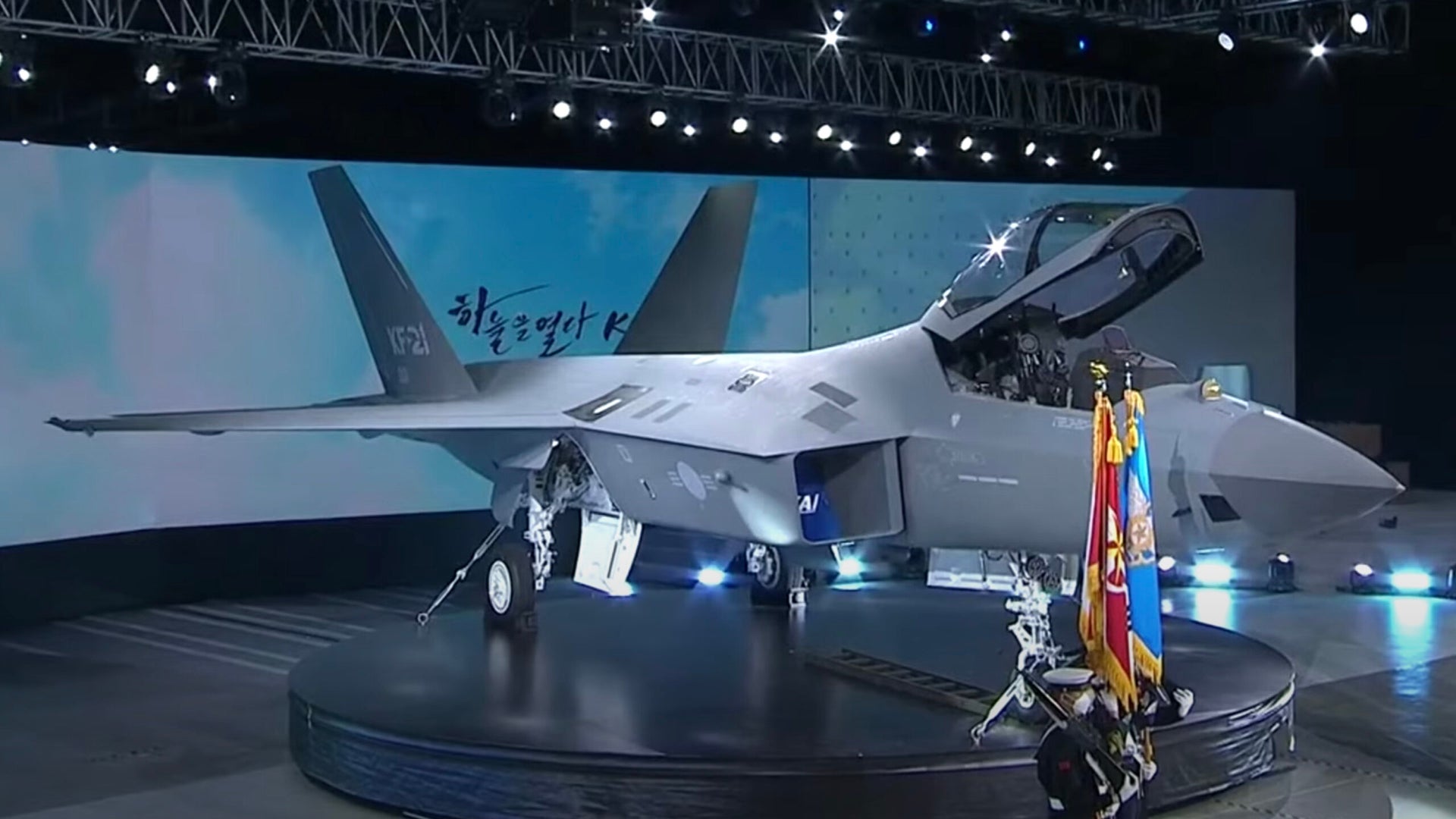
For some years now, South Korea has been planning to introduce an aircraft carrier capability to the ROKN and last year the service formally confirmed that it would introduce a vessel capable of embarking fixed-wing jets. Earlier this year, the project received the name CVX.
In past there has even been discussion of small or medium carriers equipped for catapult launch, although this equipment seemed to be absent from the proposals at MADEX, suggesting that that ROKN has settled on a carrier that is STOVL capable, larger than the Dokdo class LPH, but not as ambitious as the kinds of catapult assisted takeoff but arrested recovery (CATOBAR) warships currently on in service with France and the United States, and under development in China. Nevertheless, the Korean CVX proposals are still smaller than the two that China already operates, while Beijing’s third carrier is set to be bigger still.
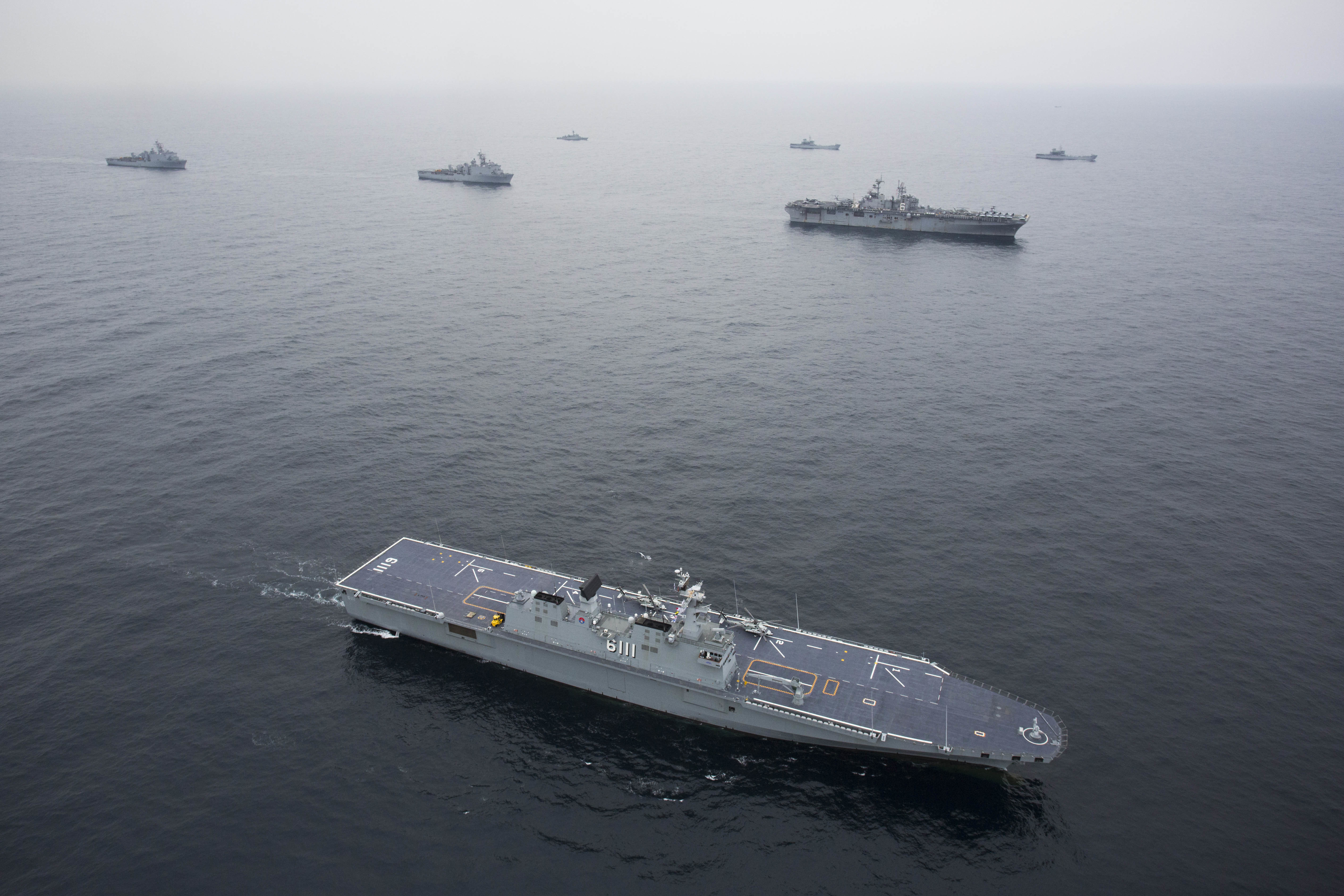
With considerable naval development in the last two decades, a true aircraft carrier (as opposed to an aviation-capable amphibious assault ship) would be the next logical step and would be a significant symbol of Seoul’s maritime power, helping it keep pace, to some degree, with regional rivals China and Japan. A carrier would also provide the centerpiece of a naval battle group also including destroyers, frigates, and submarines, all of which are produced domestically.
In case of a conflict with North Korea, the CVX would be able to launch offensive missions from standoff range using its stealthy F-35s, as well as coordinating anti-submarine warfare or amphibious operations. But there is an argument to be made that an aircraft carrier is otherwise not of huge value in the kind of conflict that could be waged with the North, although proponents point to the fact it could be less vulnerable than traditional airfields as well as being better able to defend more distant interests in the Asia-Pacific region. The carrier could also undertake secondary missions such as humanitarian relief, as well.
However, the utility of a STOVL carrier depends on Seoul’s acquisition of F-35Bs in addition to the conventional takeoff and landing F-35As, 40 of which are on order for the Republic of Korea Air Force (ROKAF). The air force had hoped to secure funds for 20 more F-35As, but it’s possible that these could be swapped for F-35Bs, or a follow-on order could comprise both variants. So far, however, no order has been placed.
The adoption of the F-35B would also provide the opportunity for closer cooperation with the U.S. Marine Corps, which has already deployed its own examples of the jet to the Asia-Pacific region aboard amphibious assault ships and has F-35Bs permanently stationed at Marine Corps Air Station Iwakuni in Japan. Potentially, Marine Corps jets could be used to increase the numbers of deployed jets aboard the CVX, in the same way, that they have been embedded within the Carrier Strike Group for HMS Queen Elizabeth. Meanwhile, aircraft and units from the ROKAF already frequently exercise with their counterparts from the U.S. Marine Corps and other U.S. services.
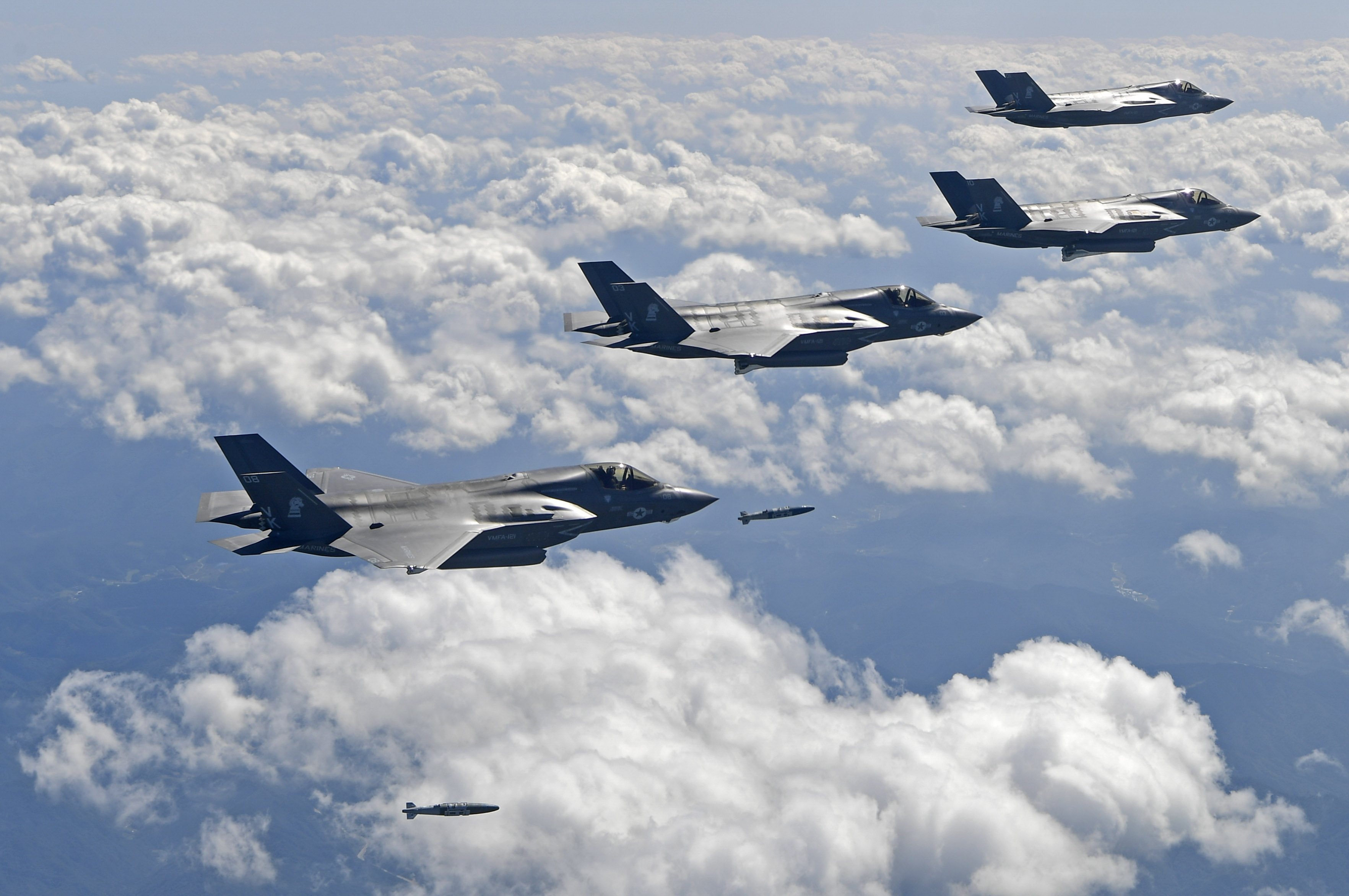
There are also parallels between the ROKN designs and the kinds of studies the U.S. Navy is looking at in terms of a potential future class of light aircraft carriers, or CVLs. The service recently confirmed it had been examining designs based on the aviation-focused America class amphibious assault ships and a “light” derivative of the new Ford class supercarriers, among others.
The acquisition of F-35Bs is expected to cost Seoul $2.7 billion, but is just part of the investment that will be needed fulfill its carrier ambitions, with the warship reported to have a likely price tag of around $1.83 billion, although this seems highly optimistic. In addition, there will be considerable manpower and training investments involved, too, as well as the recurring costs of operating and maintaining the carriers and their aircraft. This is a significant financial commitment for Seoul, which had a total approved defense budget of $52.84 billion in 2021. That would make the F-35Bs alone equivalent to 5 percent of that expenditure, although it should be noted that defense spending is on the increase.
If all goes to plan, however, the ROKN could have a carrier ready for service by the early 2030s. There is much work to be completed before then, however. Min Kyong Hoon, General Manager Shipbuilding and Marine Engineering at DSME, told Naval News that he expects a design contract to be awarded to the successful bidder at the end of this year, or in early 2022. That is expected to be followed by another three years of detailed design work before a construction contract might be issued.
Contact the author: thomas@thedrive.com
